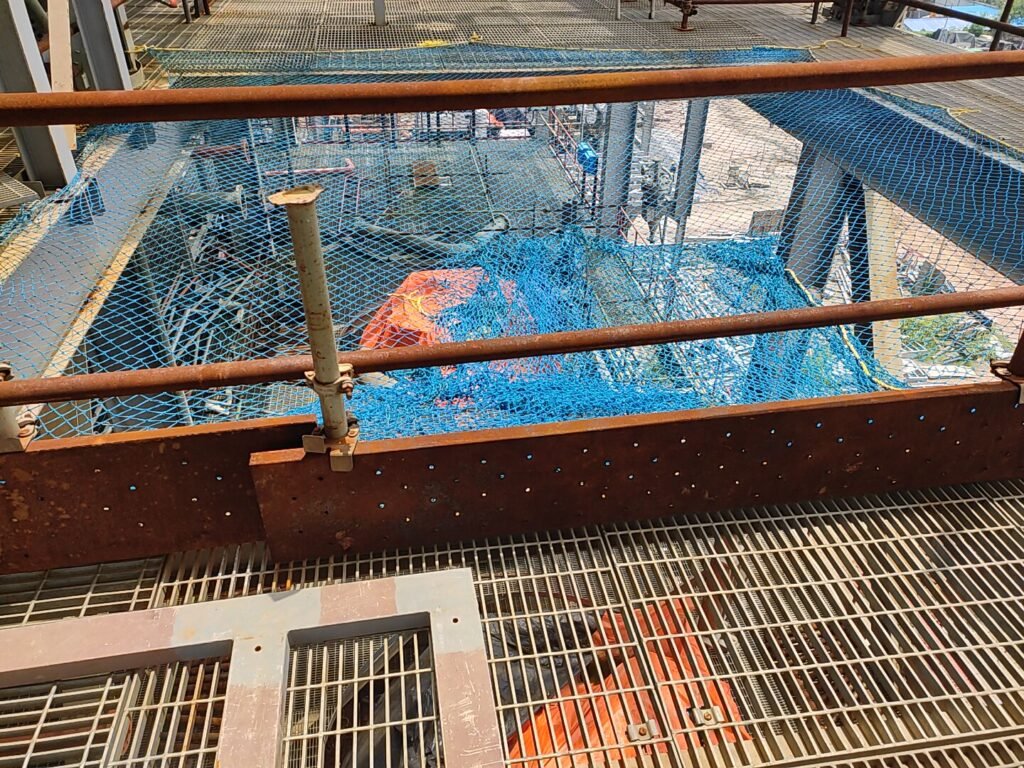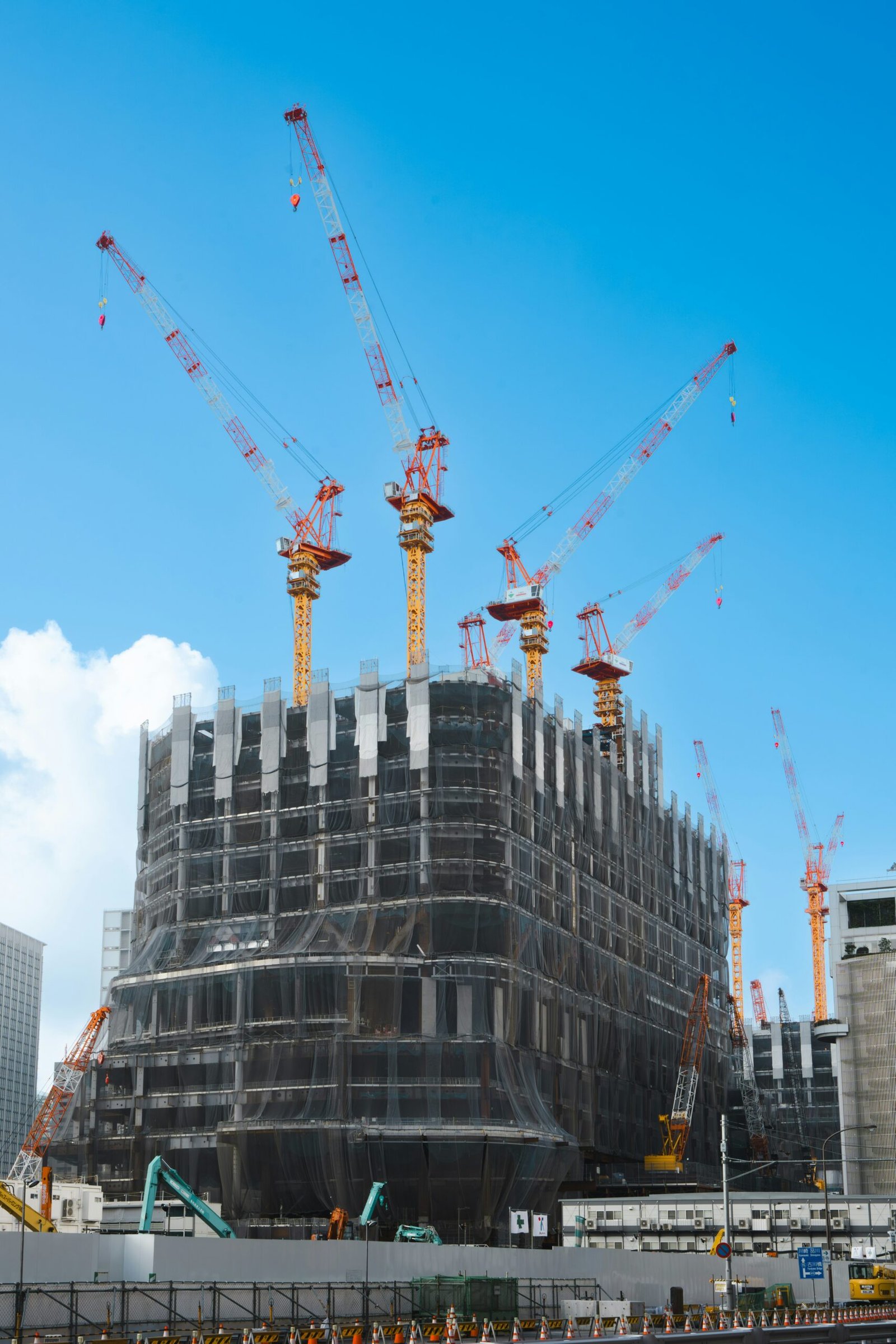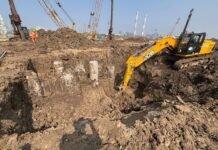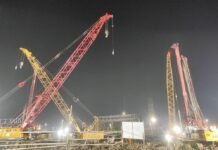Contents
Safety Nets: Types and Functions
Safety nets play a major role in enhancing the safety of construction sites by mitigating the risks associated with falls, loose materials and flying debris. Various types of safety nets are used at construction site, each designed for specific functions that contribute to the overall safety of workers and the job site. Among these, falling object nets, edge protection nets, and debris nets are the most prevalent.
Falling object nets are strategically positioned below elevated work areas to catch tools and materials that may accidentally fall. These nets are essential in preventing injuries to workers and bystanders, effectively reducing the risk of fatal incidents. They are constructed from high-strength synthetic fibers, ensuring durability and optimal impact resistance. Additionally, these nets can be suspended in multiple configurations, allowing for adaptability according to site conditions.
Edge protection nets serve as a barrier along the edges of elevated platforms, scaffolding, and similar areas where workers are at risk of falling. These nets not only prevent falls but also act as a safety perimeter, keeping workers secure while they perform their tasks. Often, these nets are designed to meet international safety standards, ensuring that they can withstand dynamic loads and harsh weather conditions without compromising worker safety.
Debris nets, on the other hand, are utilized to shield the workspace from materials that may drop or be blown away by wind. By encapsulating the area, they help maintain cleanliness and prevent potential hazards. This type of net is also vital in urban construction settings, where nearby individuals could be affected by falling debris. Regulatory bodies, both internationally and within India, have established safety standards that dictate the specifications for these nets, emphasizing the importance of compliance with industry best practices.
Overall, the implementation of safety nets is not just about adhering to regulatory requirements; it is a crucial investment in safeguarding human life and preserving the integrity of construction sites. Ensuring that these nets are correctly installed and maintained is essential for optimal performance.
Preparing for Installation: Essential Tools and Materials
Installing safety nets at construction sites is a critical task that necessitates careful preparation, especially regarding the tools, materials, and safety gear required for the project. To ensure a successful installation, it is essential to gather a comprehensive list of items. First and foremost, quality netting material must be selected, which typically includes woven polyethylene or polypropylene options. These materials provide the necessary strength and durability to withstand various site conditions.
When selecting materials for the safety net installation, it is important to comply with relevant safety standards and regulations. This ensures that the materials used are of high quality and suitable for the intended application. Additionally, suppliers should provide certifications confirming that the materials meet industry standards. By adequately preparing for the installation process with the proper tools and materials, construction teams can significantly enhance the safety and effectiveness of the safety nets deployed at their job sites.
Step-by-Step Guide to Installing Safety Nets
Installing safety nets at construction sites is a challanging step in ensuring the safety of workers and preventing accidents. To begin, a comprehensive site assessment is essential. This involves examining the construction site to identify potential hazards, such as overhead structures or areas with a high risk of falling objects. Ensure that the location chosen for the safety nets provides adequate coverage for the working area and potential fall zones.

After completing the site assessment, the next step is net positioning. Safety nets should be placed adequately beneath the work area, ideally within a distance of 10 to 15 feet from the edge. This distance helps to catch falling objects effectively while accommodating any work activity above. Attention must be paid to ensuring that the nets are free from obstructions that could hinder their performance.
Once positioned, the next phase involves anchoring the safety nets. Anchoring techniques vary based on site conditions, but typically involve securing the nets to solid structural elements, such as beams or columns. The use of appropriate anchors is paramount; heavy-duty hooks or ties should be utilized to withstand the forces imposed during a fall. Adequate spacing between anchors is critical to prevent net deformation during impact.
The final step in the installation process is the tensioning of the safety nets. Proper tensioning ensures that the net remains taut, which is vital for effective impact absorption. When tensioning, care should be taken to avoid over-tightening, as this can lead to structural damage or net failure. Regular inspections and adjustments are advisable to maintain optimal tension throughout the construction period.
Following these steps enhances safety and compliance with international and Indian construction safety regulations. Utilize illustrations and diagrams as references to visualize each step during the installation process. By adhering to these guidelines and best practices, construction sites can significantly mitigate risks associated with falling hazards.
Maintenance and Inspection of Safety Nets
Regular maintenance and inspection of safety nets are crucial components in ensuring the ongoing safety of construction sites. Safety nets serve as a vital protective measure, preventing workers from falls and mitigating the risks associated with elevated work environments. Consequently, establishing a routine for checking these installations is essential for compliance with safety regulations and standards.
To maintain the integrity of safety nets, routine checks should be conducted at least bi-weekly, or after any significant weather event or structural alteration. Inspections should focus on identifying signs of wear and tear, such as fraying, discoloration, or thread degradation. Any visible structural damage can compromise the safety net’s effectiveness, necessitating immediate attention or potential replacement. Furthermore, the anchoring systems should be examined to confirm their stability. Loose or corroded anchors can significantly diminish the net’s efficacy, placing workers at risk.
In addition to visual inspections, it is advisable to conduct periodic load tests to confirm the safety nets can withstand imposed loads. Adhering to established safety standards, such as the Indian Standard IS 16160:2014 for Safety Nets, ensures compliance with regulatory expectations. International standards, including those from the American National Standards Institute (ANSI) and the Occupational Safety and Health Administration (OSHA), provide additional guidelines for the proper upkeep of safety nets. It is important to follow these recommendations closely to ensure your safety nets meet the necessary benchmarks for performance and reliability.
When signs of damage are identified, a clear replacement protocol should be in place. The procedure for replacing safety nets must align with the original installation guidelines to ensure that safety measures remain effective without interruption. By adhering to these maintenance protocols and constantly monitoring the safety nets, construction managers can uphold a culture of safety and compliance on their sites, ultimately protecting the well-being of all workers involved.





